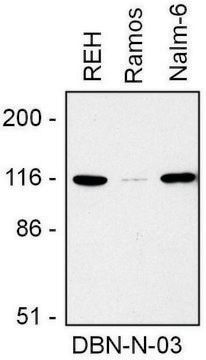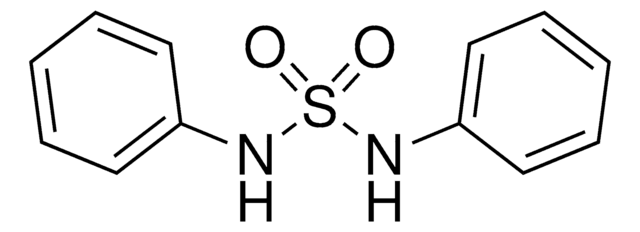P4543
Valproic acid sodium salt
98%
Synonym(s):
2-propylpentanoic acid sodium, Sodium 2-propylpentanoate, Sodium valproate
Sign Into View Organizational & Contract Pricing
All Photos(3)
About This Item
Empirical Formula (Hill Notation):
C8H15NaO2
CAS Number:
Molecular Weight:
166.19
EC Number:
MDL number:
UNSPSC Code:
12352106
eCl@ss:
42020819
PubChem Substance ID:
NACRES:
NA.77
Recommended Products
Quality Level
Assay
98%
form
powder
solubility
H2O: 50 mg/mL
originator
Abbott
SMILES string
[Na+].CCCC(CCC)C([O-])=O
InChI
1S/C8H16O2.Na/c1-3-5-7(6-4-2)8(9)10;/h7H,3-6H2,1-2H3,(H,9,10);/q;+1/p-1
InChI key
AEQFSUDEHCCHBT-UHFFFAOYSA-M
Gene Information
human ... ALDH5A1(7915)
Looking for similar products? Visit Product Comparison Guide
General description
The antiepileptic effects of Valproic acid (VPA) are achieved by reducing high-frequency neuronal firing through the blockage of voltage-gated sodium, potassium, and calcium channels. This medication affects the biochemical occurrence of aura and impacts pain perception by modulating GABA or glutamate-mediated neurotransmission. Additionally, VPA influences signaling systems such as the Wnt/beta-catenin and ERK pathways, interfering with inositol and arachidonate metabolism. Furthermore, VPA is crucial in expressing multiple genes involved in cell survival, transcription regulation, ion homeostasis, signaltransduction, and cytoskeletal modifications. Both immediate biochemical effects and long-term genomic influences explain the underlying effect of VPA in treating various conditions.
Valproic acid is an anticonvulsant and mood-stabilizing drug. It is used to treat epilepsy and bipolar disorder. Valproic acid helps to repress the Warburg effect and the development of tumor in neuroblastoma.
Valproic acid is an anticonvulsant and mood-stabilizing drug. It is used to treat epilepsy and bipolar disorder. Valproic acid helps to repress the Warburg effect and the development of tumor in neuroblastoma.
Application
Valproic acid sodium salt has been used:
- in resazurin viability assay
- to systematically study its effects of clinical doses on brain volume and offspring behavior
- to study its effect on atherosclerotic lesion size
- in genetic expression studies in mice
Biochem/physiol Actions
Anti-convulsant that also has efficacy as a mood stabilizer in bipolar disorder.
Features and Benefits
This compound is a featured product for Neuroscience research. Click here to discover more featured Neuroscience products. Learn more about bioactive small molecules for other areas of research at sigma.com/discover-bsm.
This compound is featured on the Dopamine and Norepinephrine Metabolism page of the Handbook of Receptor Classification and Signal Transduction. To browse other handbook pages, click here.
This compound was developed by Abbott. To browse the list of other pharma-developed compounds and Approved Drugs/Drug Candidates, click here.
related product
Product No.
Description
Pricing
Signal Word
Warning
Hazard Statements
Precautionary Statements
Hazard Classifications
Acute Tox. 4 Oral - Repr. 2
Storage Class Code
11 - Combustible Solids
WGK
WGK 3
Flash Point(F)
Not applicable
Flash Point(C)
Not applicable
Personal Protective Equipment
dust mask type N95 (US), Eyeshields, Gloves
Choose from one of the most recent versions:
Already Own This Product?
Find documentation for the products that you have recently purchased in the Document Library.
Customers Also Viewed
Valproic acid suppresses Warburg effect and tumor progression in neuroblastoma
Fang E, et al.
Biochemical and biophysical research communications (2018)
Erik Taubøll et al.
Epilepsia, 50(8), 1868-1874 (2009-06-06)
Recent animal studies have indicated possible reproductive endocrine effects of levetiracetam (LEV). The aim of the present study was to investigate possible reproductive endocrine effects of LEV compared to valproate (VPA) using human ovarian follicular cells. Cell cultures of human
Dose-dependent memory effects and cerebral volume changes after in utero exposure to valproate in the rat
Frisch C H, et al.
Epilepsia, 50(6), 1432-1441 (2009)
The pharmacogenomics of valproic acid
Zhu M, et al.
Journal of Human Genetics, 62(12), 1009-1009 (2017)
Derek Daigle et al.
Journal of virology, 85(11), 5628-5643 (2011-03-18)
Diverse stimuli reactivate the Epstein-Barr virus (EBV) lytic cycle in Burkitt lymphoma (BL) cells. In HH514-16 BL cells, two histone deacetylase (HDAC) inhibitors, sodium butyrate (NaB) and trichostatin A (TSA), and the DNA methyltransferase inhibitor azacytidine (AzaCdR) promote lytic reactivation.
Our team of scientists has experience in all areas of research including Life Science, Material Science, Chemical Synthesis, Chromatography, Analytical and many others.
Contact Technical Service














